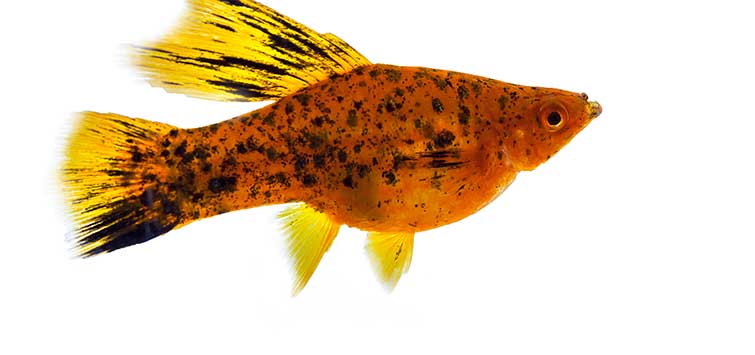How Dr. Joanne Norton Helped Me Pass Algebra
Author: Bill Allen
In the year 1968, a young hobbyist's algebra grade is saved by reading legendary livebearer breeder and geneticist Dr. Joanne Norton’s articles in TFH.
Algebra Trouble
In 1968 I was a ninth-grade student who found reading Tropical Fish Hobbyist a bit more interesting than algebra. I particularly disliked doing homework, which might not have been so bad if I had not daydreamed through class, usually drawing pictures of hifin and lyretail swords with extravagant finnage. Unfortunately, by the end of the six-week grading period, I found myself on the low side of a D average.
Dr. Norton Teaches Me About Math
I had been reading Dr. Norton’s articles about the genetics of the hifin and the lyretail traits in swordtails, and I had actually been able to obtain some rather nondescript lyretail specimens that had accidentally arrived with a shipment of fish at the local department store. I had also seen some for sale at a pet store, but at $7.50 per pair, buying them was out of the question. I had never seen any hi-fins except in photos.
By reading Dr. Norton’s articles I learned how the laws of genetics determine the traits of hifin and lyretail. As I understood it, a swordtail possesses two genes for each of these two traits. Each parent passes on one of these two genes to each offspring, and it combines with the gene from the other parent. The passing on of each gene is determined entirely by chance, so the laws of probability become involved. I found out from her articles that if you cross two hifin swords, you would expect the offspring to be 25 percent normal, 50 percent heterozygous hifin (possessing the normal gene in addition to the hifin gene), which look like pure hifins, and 25 percent homozygous hifin, which are indistinguishable from the heterozygous hifins. However, a wrench was thrown into the works when Dr. Norton explained that homozygous hifins do not exist because it is a lethal gene—any fish unlucky enough to be awarded a matched pair of hifin genes will die before being born.
Now, as if this weren’t complicated enough, Dr. Norton’s articles also showed us the results of combining the two traits and all the mathematical permutations. Such a cross produces hifin lyretails, a beautiful fish indeed! She then showed us—using what I later learned were called Punnett squares—that if two of these hifin lyretails are mated, their progeny will consist of 1/16 normal, 1/16 hifin-lyretails, and a whole bunch of other combinations.
Permutations: The Common Link
Oh, it got complicated! But, through the fog that stuck with me after each algebra class, I realized that we had been discussing something which struck me as being similar: permutations. The textbook and our lecturer used the flipping of coins—something that related readily to us ninth grade boys—as an illustration of the laws of chance and the permutations, or possible combinations, and the likelihood of each combination. Somehow I made the connection that the laws of chance that dictate the possible combinations of coin tosses were awfully similar to what Dr. Norton was writing about. So I humbly begged my teacher to allow me to give a presentation on genetics—for extra credit, of course.
Success!
Those of you that have seen me at conventions holding court late at night in the hospitality room know that I am not frightened of speaking to crowds, and this quality served me well even in the ninth grade. My presentation was an entertaining, captivating, exhilarating experience for the class. Well, at least that’s how I remember it. If it wasn’t, then it was at least enough to shove my pitiful grade into the passing column.
Although I never personally acknowledged it to her, I have Dr. Norton (and TFH) to thank for helping me pass ninth-grade algebra. I just wish now that I had learned a little more algebra, as I had to take chemistry a couple of years later. For that class, it took writing a paper on the chemistry of the nitrogen cycle to push me into the passing column.
Way back then I never dreamed that another person featured in many of these articles, Glenn Takeshita, would later be my friend and colleague (or that I’d be telling this story in the same issue of TFH as one of his articles!).

.png?h=595&iar=0&w=2781&hash=5FD5E69473BCC22199FBFA2FB71B6033)



